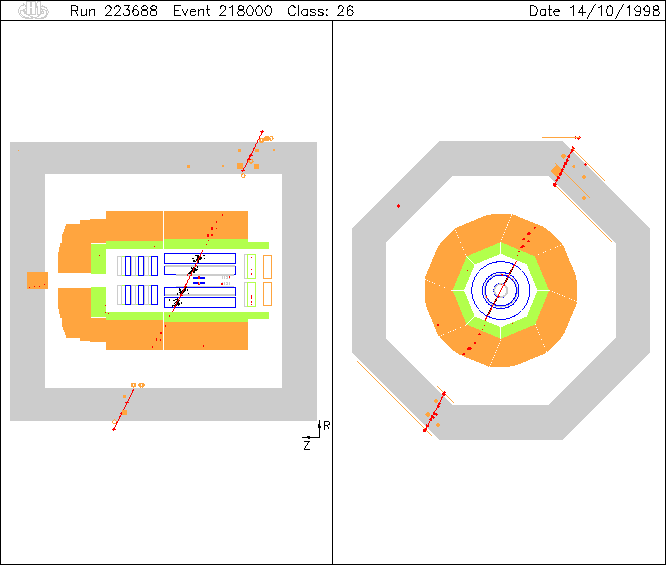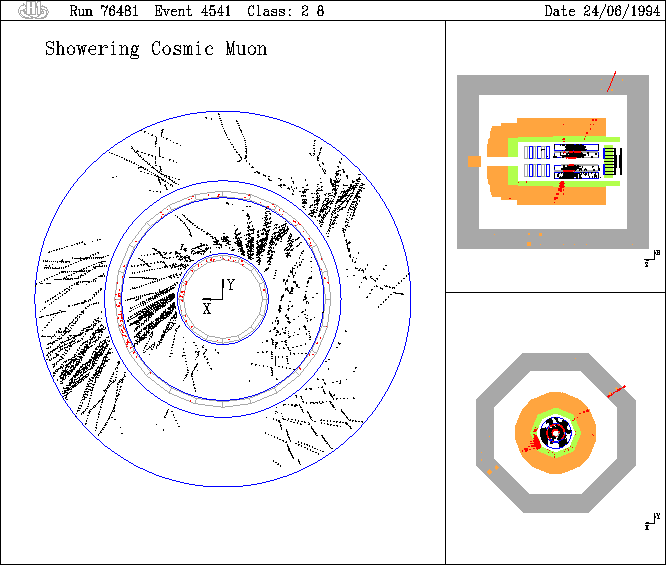Our surrounding space is filled with elementary particles originating from distant galactic phenomena: cosmic rays. Our body is insensitive to them, though several cosmic induced particles cross it every second. The Cosmophone is designed to detect them and materialise their trajectories and characteristics in space as sounds. Such an installation can be built using standard techniques of elementary particle physics and computer music. The variety of cosmic induced phenomena measurable at sea level together with the installation modularity allow applications ranging from large concert halls to personal micro-devices.

In the present version of the Cosmophone, a set of sensors located around the room detects cosmic rays using the scintillation light they induce in a specific material. Information on their trajectories is sent almost instantaneously to a sound synthesis system, which reproduces them in space. Particle positions are indicated by impact sounds on the roof and in the floor. The feeling of speed is given by a shift of the sound pitch (“Doppler” effect), similar to that produced by a fire-men truck driving very fast. Showers of electrons and anti-electrons which are produced from time to time by an interaction of a muon above the room, are reproduced by a stream-like sound.
Cosmics
Interstellar space is filled with a permanent flux of high-energy elementary particles called “cosmic rays”. These particles are predominantly made of protons, i.e. nuclei of hydrogen atoms. They are the remnants of violent phenomena which have created and accelerated them somewhere in the universe. Most of them are produced within our galaxy, for example when an old massive star explodes into a supernovae. They stay confined in the galaxy for millions of years by the galactic magnetic field.

All around the earth cosmic rays impinge upon the atmosphere and create showers of secondary particles. Though partly absorbed by the atmosphere, these showers induce a large variety of phenomena which are measurable at sea level using the techniques of particle physics. The events shown below were recorded by the H1 experiment, a 10 meter large cubic detector located 30 meters underground in Hambourg.
The main phenomena measurable at sea level include:
• a large flux of muons. A muon is a kind of a heavy electron absent from usual matter because of its short life time. Muons are produced at a large rate in cosmic atmospheric showers. They are able to reach the ground thanks to their outstanding penetrating power.

• secondary showers induced by muon interactions within the neighbouring matter. A frequent example is the radiation of electromagnetic showers, i.e. showers of electron/anti-electron pairs, when muons pass close to atomic nuclei.

• bunches of several muons with the same direction and a few meters from each other, produced in energetic atmospheric cosmic showers.

Links to learn more about particles and cosmic rays:
- The CERN general public page